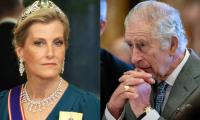We are in election year again. Ten years back around this time we were in election mode when the terrorism unleashed by the TTP impacted the electioneering and deprived the Awami National Party and Pakistan Peoples Party, two mainstream secular parties from electioneering, especially in the province of Khyber Pakhtunkhwa.
According to government reports at that time, 437 people were killed in over 119 violent incidents between April 20, when campaigning officially started and May 9, when the campaign ended before election day.
A top leader of the ANP, Ilyas Bilour, was killed by a TTP suicide attacker during the campaign on December 22, 2012. While Asif Zardari couldn’t campaign for his party – being the president of the country – the young chairman of the party with serious threats by the TTP that killed his mother earlier, had to campaign mainly via video link. Without any threats or attacks from the terror outfit, it was easier for the PTI to form the government in KP in 2013 after cobbling a coalition with the right-wing Jamaat-e- Islami.
Pakistan’s direct economic losses due to the terrorism unleashed by the TTP and Al-Qaeda combined crossed $126.79 billion between 2000 and 2010.
The final push began only after the tragic carnage carried out by the same outfit on December 16, 2014 claimed the lives of 150 people including 134 schoolchildren.
A week later, on December 24, 2014 the political leadership and the top military brass had a huddle in the prime minister’s house under Nawaz Sharif, a final decision was made to eliminate the terror group, after over a dozen and a half failed peace agreements with the group spanning a decade or so.
Between 2015 and August 15, 2021 – when the Afghan Taliban captured Kabul – terrorism incidents went down and thousands of the TTP fighters took refuge mostly in the eastern part of Afghanistan, then under the control of the Afghan Taliban.
During Karzai and Ashraf Ghani’s rule, many in the strategic community in Pakistan believed and promoted the narrative that the TTP operated through the wink and the nod of the then Kabul government in cahoots with rival hostile intelligence agencies.
The situation has changed after the Afghan Taliban took over Kabul. According to the South Asia Terrorism Portal, the terrorism incidents carried out by the terror groups in 2021 went up to 267 from 193 in 2020, killing 214 civilians compared to 169 the preceding year and killing 226 security personnel in 2021 compared to 178 in the previous year. Come 2022, there is a marked uptick in the violence caused by the TTP after their unification under Noor Wali Mehsud. In 2022, terror incidents rose to 361, killing 229 civilians and 374 security personnel.
The PTI government led by Imran Khan had welcomed the Afghan Taliban’s takeover and claimed they had broken the shackles of slavery. Buoyed by their fantasy of the Afghan Taliban securing Pakistan’s western borders, the Imran Khan government sent delegations to Kabul. The Afghan Taliban, who should have played the role of a mediator, only played the role of a facilitator. The TTP not only got its demand of repatriation of their fighters and their families back in the troubled province but also brought the leftover modern weapons and gadgets the US led forces left behind. Earlier, the Afghan Taliban had freed most of the fighters in Afghan jails who were put there by the Ashraf Ghani government.
In the last few months, there have been spectacular attacks against the security forces and the police by the terror outfit using Afghanistan as its true strategic depth. When Interior Minister Rana Sanaullah vowed to go after the terrorists operating from Afghan soil, former PM Imran Khan instead of supporting him, stood by the Afghan Taliban government.
Rana Sanaullah is on the record claiming that still around 7,000 to 10,000 TTP fighters are holding out in eastern Afghanistan posing serious security challenges to Pakistan, especially to the provinces of Khyber Pakhtunkhwa and Balochistan, where the terror outfit has cobbled up a working alliance with some of the Baloch insurgent groups – creating a lethal cocktail.
The Khyber Pakhtunkhwa government has remained oblivious to the rising wave of terrorism that has practically debilitated the valiant police of the province. The Counter Terrorism Department (CTD) created after the APS carnage has remained poorly funded and stands demoralized. Nacta created after the APS attack remained dysfunctional during the PTI rule and the National Action Plan conceived and partly implemented during the Nawaz government too has remained forgotten.
As we speak, we have strained relations with Kabul under the Afghan Taliban, an economic meltdown of biblical proportions as we deal with the aftereffects of the floods of last summer, and continued political instability launched by Imran Khan. At this juncture, the rising insurgency of the TTP finding new partners creates a situation of grave national security in an election year. It has made it impossible to hold free and fair elections by giving every political group a level playing field as the terror group has publicly threatened the major political parties of the ruling coalition, the PML-N and the PPP.
Appeasement never works when dealing with terrorism. Also, kinetic actions can only kill terrorists but not terrorism. All the wizards need to put their heads together to think this through and act without wasting more time.
The writer is a journalist. He tweets @murtazasolangi and can be reached at:
murtazasolangi@gmail.com
Many people believe that in future, AI will play an even more significant role in their lives
In April 2024, three Chinese and one Belarusian company were sanctioned for exporting missile-enabling technology to...
Pakistan has second highest neonatal mortality in world; in education sector, country's 26 million kids are out of...
Key actors in global power politics are US, China, Russia, European Union, and emerging powers such as India and Brazil
Maulana Fazl manages to bring together factions that historically stand opposed
NASA says August 2024 set new monthly temperature record, capping Earth’s hottest summer since 1880







